Navigation
Install the app
How to install the app on iOS
Follow along with the video below to see how to install our site as a web app on your home screen.
Note: This feature may not be available in some browsers.
More options
Style variation
-
Congratulations MintJulep on being selected by the Eng-Tips community for having the most helpful posts in the forums last week. Way to Go!
You are using an out of date browser. It may not display this or other websites correctly.
You should upgrade or use an alternative browser.
You should upgrade or use an alternative browser.
What is the best pile drilling method in loose clay?
- Thread starter mbilal89
- Start date
- Status
- Not open for further replies.
Sounds like some form of concrete pile, right. If soft and caving some form of cased pile likely needed, but an augured pile using hollow stem augers and grout them pumped as auger is withdrawn is done also. Trade names given to them, such as Franki, Prepakt.
- Thread starter
- #6
Hokie66 is right about tangent piles.
@EireChch, yes, I meant soft clay, with 1-3 SPT blow counts. Did you mean a bored pile would collapse in soft clay? even with the use of bentonite slurry?
Actually we had a project of this nature and when the excavation was done, the quality was not good. I am posting some pictures and would ask for some insight into the reasons, the solutions and the possible rectifications of the quality issues.
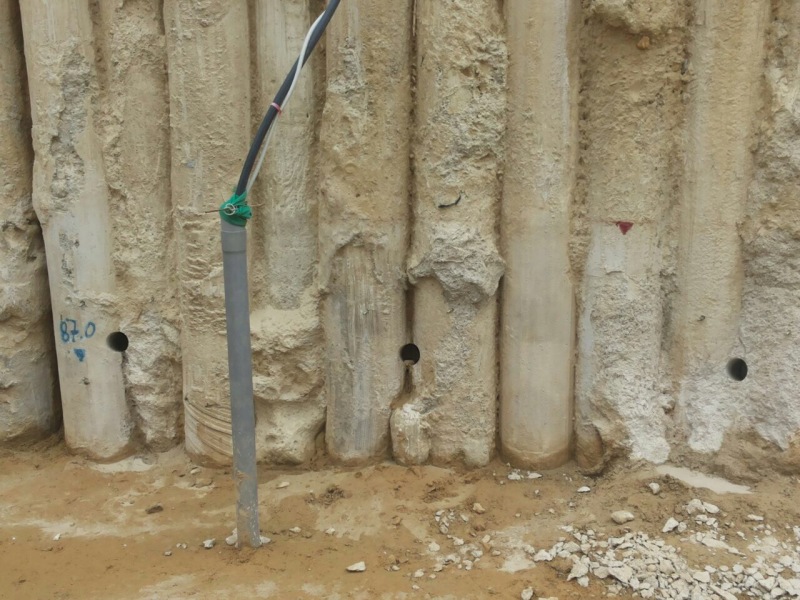
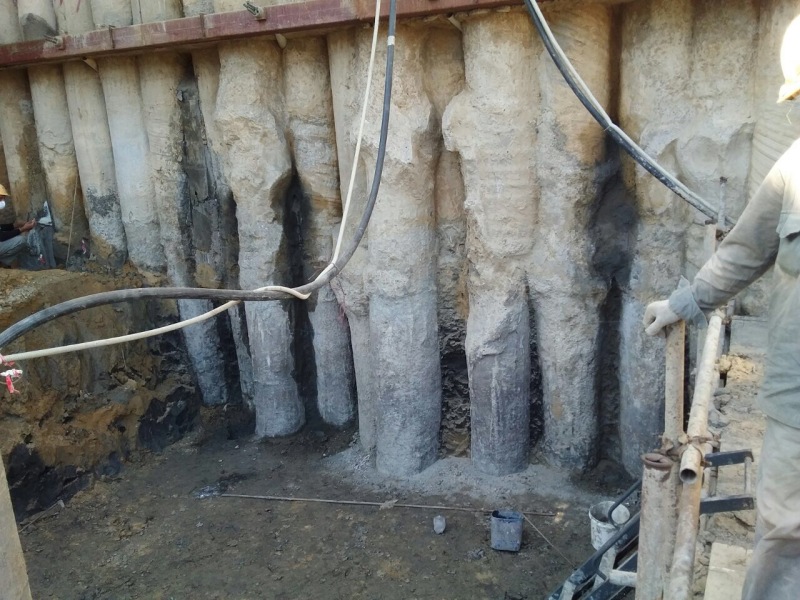
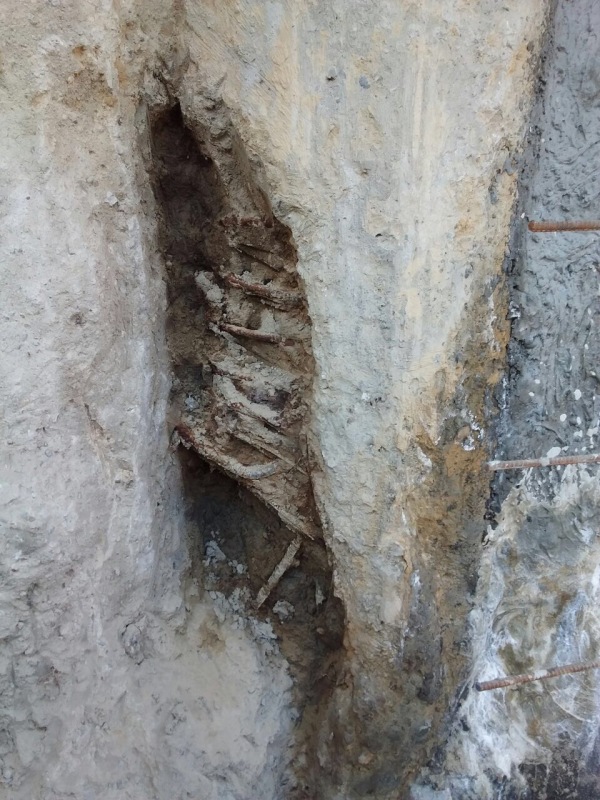
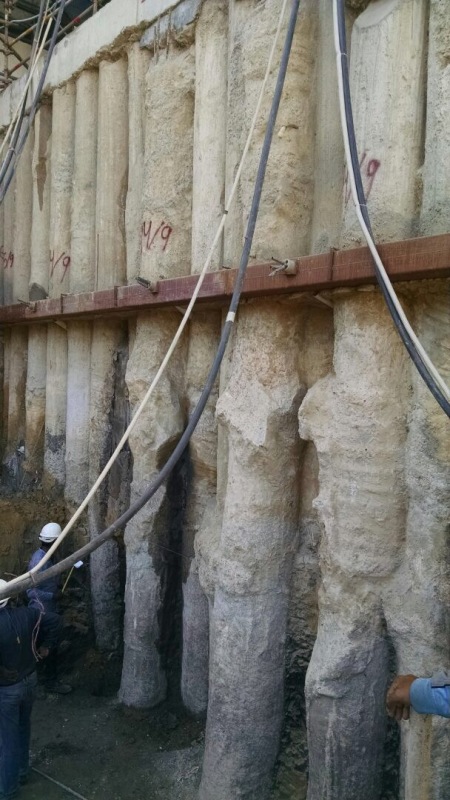
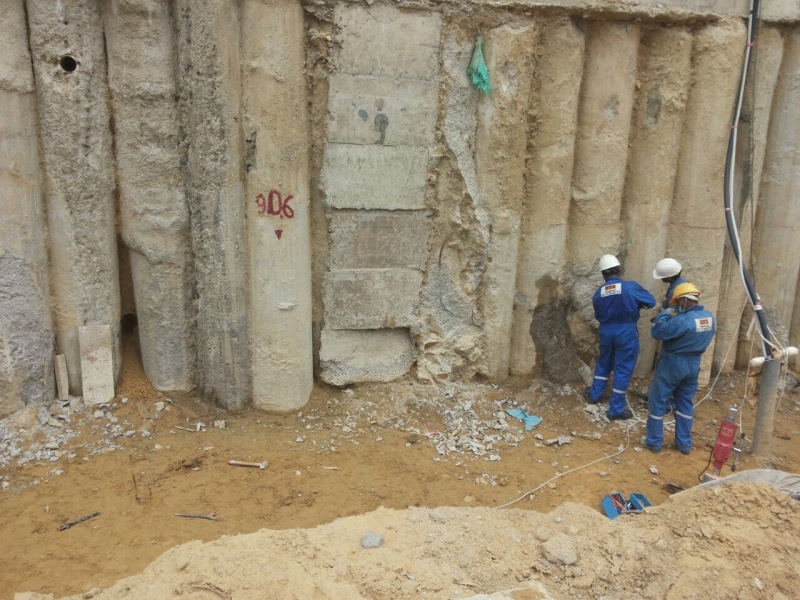
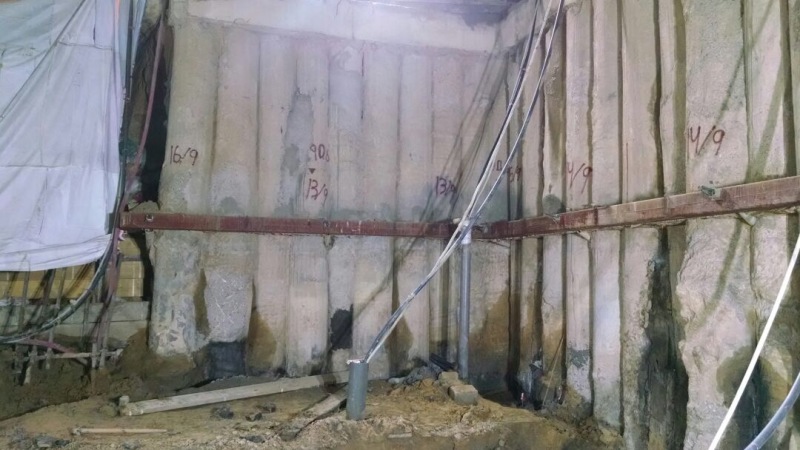
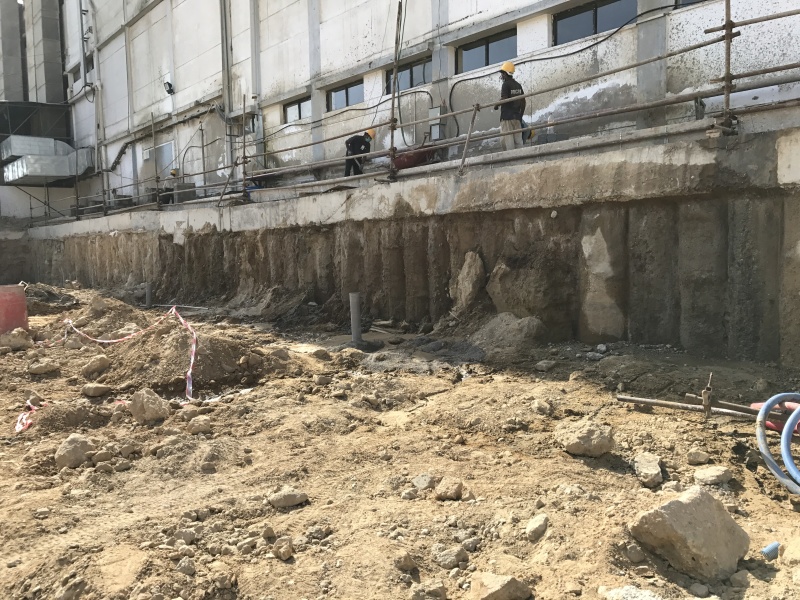
@EireChch, yes, I meant soft clay, with 1-3 SPT blow counts. Did you mean a bored pile would collapse in soft clay? even with the use of bentonite slurry?
Actually we had a project of this nature and when the excavation was done, the quality was not good. I am posting some pictures and would ask for some insight into the reasons, the solutions and the possible rectifications of the quality issues.







Your "tangent" piles wall has certainly been constructed with a CFA rig. You have what you paid for : low cost job. If you want a "nice" wall then go for secant piles, either cased CFA or cased rotary. This will ensure verticality good position of piles. One problem with soft clays is that you need a minimum cohesion of 15 kPa. If you don't have this minimum value, soil will not provide enough lateral support for fresh concrete pressure. This may lead to non complying piles and as a minimum to large concrete overbreaks.
Exactly as BigHarvey notes- with clays that soft, extrusion of the grout into the confining material is inevitable. Cased bored piles would be ideal for maintaining pile form...no client ever wants to pay for them but I'd say from the limited information available that your ground conditions justify them.
Watch out for pile communication if you're going with a tangent wall.
All the best,
Mike
Watch out for pile communication if you're going with a tangent wall.
All the best,
Mike
- Thread starter
- #12
@ BigHarvey, This wasn't a CFA rig. It was the conventional hydraulic straight rotary; IMT 180 and SoilMec SR60. the drilling was done with the help of bentonite slurry to stabilise the borehole.
@Oldestguy, I wouldn't say the placement of the rig. Actually the kelly guide of both rig were removed for some reason. In my opinion, the issues in alignment were due to this. The architect was surely worried with the results, because he lost some space of the basement.
@Hokie66, I agree with you. But I want to know how can we have better results and what precautions are to be taken when pouring concrete in slurry?
@MadMike @BigHarvey, The communication between the piles is also an issue. When we install the temporary casing, it has to have a diameter more than the pile diameter. So, we actually cannot get a tangent pile if we install a guide casing, and if we do, as in our case, the casing cuts the adjacent piles and damages the reinforcement as well if we lose the verticality. We proposed a secant pile system, but the structural engineer didn't agree.
If the soil do not have a minimum 15KPa cohesion, even if we case the piles, when we remove the casing, will the soil be able to provide the lateral support?
@LRJ, I haven't seen anyone use driven piles as earth retaining structures.
@Oldestguy, I wouldn't say the placement of the rig. Actually the kelly guide of both rig were removed for some reason. In my opinion, the issues in alignment were due to this. The architect was surely worried with the results, because he lost some space of the basement.
@Hokie66, I agree with you. But I want to know how can we have better results and what precautions are to be taken when pouring concrete in slurry?
@MadMike @BigHarvey, The communication between the piles is also an issue. When we install the temporary casing, it has to have a diameter more than the pile diameter. So, we actually cannot get a tangent pile if we install a guide casing, and if we do, as in our case, the casing cuts the adjacent piles and damages the reinforcement as well if we lose the verticality. We proposed a secant pile system, but the structural engineer didn't agree.
If the soil do not have a minimum 15KPa cohesion, even if we case the piles, when we remove the casing, will the soil be able to provide the lateral support?
@LRJ, I haven't seen anyone use driven piles as earth retaining structures.
Pile déviations are very important for a rotary pile, hence my comment on CFA. Anyway don't use tangent piles. You should also, if not done use guide walls to position accurately the piles and control verticality. Casing the full length of the pile will help you for verticality because of the rigidity of the temporary casing.
If the clay shows less than 15 kPa of cohesion you can press statically concrete sheetpiles in the ground, it's commonly done in Bogota (Colombia).
You can also use CSM (Cutter Soil Mixing) and steel beams to construct a temporary retaining structure.
If the clay shows less than 15 kPa of cohesion you can press statically concrete sheetpiles in the ground, it's commonly done in Bogota (Colombia).
You can also use CSM (Cutter Soil Mixing) and steel beams to construct a temporary retaining structure.
- Thread starter
- #16
- Status
- Not open for further replies.
Similar threads
- Locked
- Question
- Replies
- 1
- Views
- 2K
- Replies
- 5
- Views
- 6K
- Question
- Replies
- 4
- Views
- 3K
- Replies
- 9
- Views
- 9K
